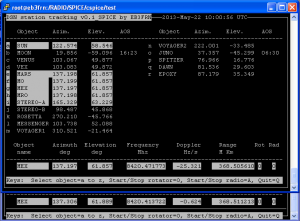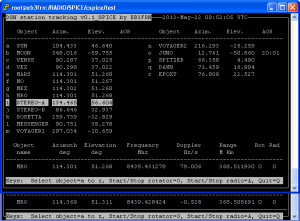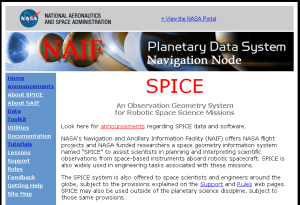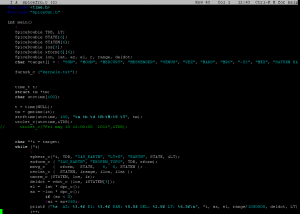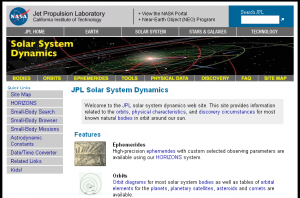The next images, I’m comparing the data using my ephemeris in the upper side and Horizons ephemeris in the lower side. Remember that Horizons dont give data for planetary probes, and are using the data of the planet that is orbiting the planet.
As you can apreciate, in the upper side, the range calculated using SPICE and the mission kernels is smaller than the range of the MARS calculated by Horizons. Then the MEX space probe not is eclipsed by the planet and then detectatble for our stations in the earth! Check the difference of 60 KHz in the predicted frecuency and doppler too.
Now the inverse case, the MRO probe is more away from the earth, then the probe is eclipsed by the planet.
Another issue observed is a small position difference from JPL/Horizons to my ephemerris using SPICE. It happend, because JPL/Horizons uses TDB as time reference and I’m using UTC. Then, exists a difference of few secconds produced by the leap seconds.
